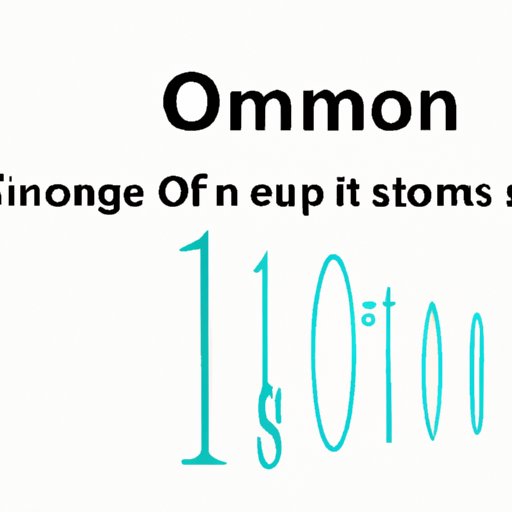
I. Introduction
The emergence of the omicron variant has brought renewed attention to the timeline from exposure to symptom onset. With its high transmissibility, it’s important to know how long it takes for symptoms to appear so that necessary precautions can be taken. In this article, we’ll explore the timeline for the omicron variant, including factors that can affect it and what to expect with this new strain of COVID-19.
II. Waiting and Wondering: The Timeline from Omicron Exposure to Symptom Onset
The timeline from exposure to symptom onset for omicron can vary widely. It typically takes around 5-7 days for symptoms to appear, but it can take as little as 2 days or as long as 14 days. This variability is due to individual factors such as age, underlying health conditions, and immune system function. It’s important to note that some individuals may experience no symptoms at all but still be contagious.
The timeline can also be affected by environmental factors such as vaccination status, mask-wearing, and social distancing. Studies suggest that individuals who are fully vaccinated may have a shorter timeline from exposure to symptom onset than those who are not vaccinated.
Real-life examples have shown us that the timeline can vary greatly. Some individuals have reported symptoms just two days after exposure, while others have tested positive more than a week later. It’s important to remain vigilant and continue to monitor for symptoms even if they don’t appear right away.
III. The Omicron Incubation Period: How Long until You Know You’re Infected
The incubation period for COVID-19 is the time it takes from when a person is infected to when they show symptoms. For omicron, the incubation period is currently estimated to be 5-7 days, similar to other COVID-19 strains. However, recent studies suggest that the incubation period for omicron may be shorter than other strains, leading to faster transmission.
It’s important to monitor for symptoms during the incubation period, even if you feel fine. This is because you can still be contagious and spread the virus to others. This is why frequent testing, wearing masks, and practicing social distancing are crucial prevention methods.
IV. From Exposure to Symptoms: What to Expect with the Omicron Variant
Common symptoms of the omicron variant include cough, fever, loss of smell or taste, fatigue, and headaches. These symptoms are similar to other COVID-19 strains, but there are some differences worth noting. One prominent feature of the omicron variant is the high frequency of symptoms in the upper respiratory tract, including a runny or stuffy nose, which is not typically seen in other strains of COVID-19.
The severity of symptoms can vary widely from person to person, with some being asymptomatic while others require hospitalization. Recent studies suggest that individuals infected with omicron may have milder symptoms compared to other strains, but more research is needed to confirm this.
V. Omicron’s Sneaky Symptoms: Understanding the Delay from Exposure
One unique feature of the omicron variant is the delay from exposure to symptom onset. This means that you may have been infected without knowing and may have already spread the virus to others before realizing it. This is why it’s important to continue to practice preventative measures such as vaccination, wearing masks, and social distancing even if you don’t feel sick.
In addition, it’s important to know that some individuals may be asymptomatic or have mild symptoms that may go unnoticed. This is why frequent testing and being vigilant about symptoms is crucial in stopping the spread of the virus.
To reduce the risk of transmission, it’s recommended to isolate and get tested as soon as possible after exposure and follow public health guidelines regarding quarantine.
VI. Navigating the Omicron Timeline: When to Get Tested and Isolate
If you have been exposed to the omicron variant, it’s recommended to get tested as soon as possible. It’s also important to isolate for at least 5-10 days, regardless of symptoms, to avoid potentially spreading the virus to others.
If you test positive for COVID-19, it’s important to follow public health guidelines regarding quarantine to prevent further spread. This typically involves isolating for 5-10 days and monitoring symptoms.
VII. Conclusion
The omicron variant has brought renewed attention to the timeline from exposure to symptom onset, as well as the importance of vigilant monitoring and prevention measures. By understanding the timeline and being proactive in testing and isolation, we can help slow the spread of the virus and protect ourselves and our communities.
Take action by getting vaccinated, wearing masks, and following public health guidelines to help protect yourself and those around you. Together, we can beat this pandemic.




